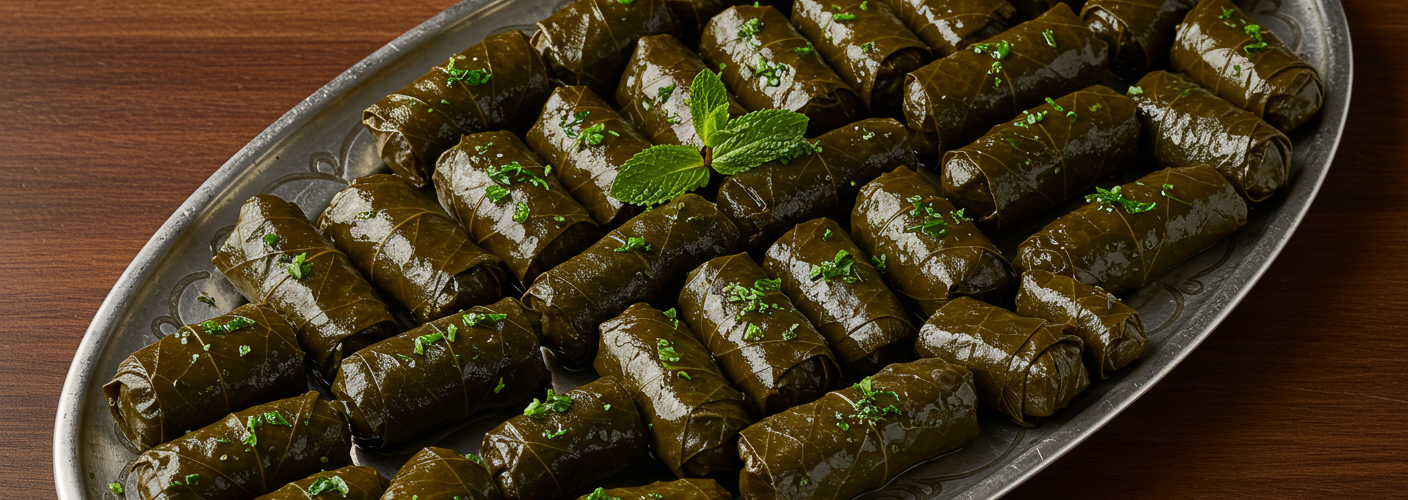Lebanese cuisine is renowned for its rich flavors, fresh ingredients, and the tradition of sharing meals with family and friends. One dish that embodies this spirit is Warak Enab, or stuffed grape leaves. This delightful dish is not only a staple in Lebanese households but also represents the heart of Mediterranean cooking — simple, wholesome ingredients wrapped up in a beautiful, bite-sized package.
The History and Tradition of Warak Enab
Warak Enab has deep roots in Lebanese culture and is often prepared during family gatherings and special occasions. The origins of stuffing grape leaves can be traced back centuries, with variations seen in many Mediterranean and Middle Eastern cuisines. In Lebanon, the art of making Warak Enab has been passed down through generations, with each family adding their unique twist to the recipe. Whether it’s a major celebration or a simple family dinner, the preparation and sharing of these stuffed leaves signifies love and togetherness.
Ingredients That Matter
To create authentic Warak Enab, you need a handful of key ingredients:
- Grape Leaves: Fresh or jarred grape leaves serve as the perfect vessel for the filling. They bring a unique tang and a tender texture once cooked.
- The Filling: Traditionally, the filling consists of savory rice, ground lamb or beef, herbs like parsley and mint, and warm spices such as cinnamon and allspice. Some variations may include additional ingredients, like pine nuts or chickpeas, adding a delightful crunch and extra flavor.
- Lemon Juice and Olive Oil: A generous squeeze of fresh lemon juice and a drizzle of high-quality olive oil over everything before cooking elevates the dish with brightness and richness.
The Art of Rolling
Rolling grape leaves is an art in itself. To begin, you lay a grape leaf flat, vein side up. Place a spoonful of the filling near the stem of the leaf. With a gentle touch, fold the sides inward and then roll tightly from the bottom to the top, ensuring the filling is secure within. The technique may take a bit of practice, but with time, you’ll master the roll and impress your guests.
Cooking and Serving
Once assembled, the Warak Enab is typically placed in a pot with the seams facing down, covered with slices of lemon and a touch of water and olive oil, and then simmered slowly. This cooking method ensures the flavors meld beautifully, while the grape leaves become tender and melt-in-your-mouth delicious.
Warak Enab is often served warm or at room temperature, accompanied by a drizzle of extra virgin olive oil and a side of yogurt for dipping. The finished dish showcases not just the culinary skills of the chef but also the beauty of sharing food, as guests gather around the table to enjoy a taste of Lebanon.
Why You’ll Love Warak Enab
The beauty of Warak Enab lies not only in its flavors but also in its versatility. Whether you choose to serve it as an appetizer, a main course, or even a side dish, Warak Enab fits perfectly into any meal. It’s ideal for gatherings, potlucks, or simply as a comforting family dinner.
Each bite of these stuffed grape leaves is a reflection of Lebanese culture — a delightful amalgamation of flavors and textures that brings people together. So, the next time you’re looking to explore the rich tapestry of Lebanese cuisine, take a step into tradition and prepare a plate of Warak Enab — a dish that nourishes both the body and the soul.




Add comment